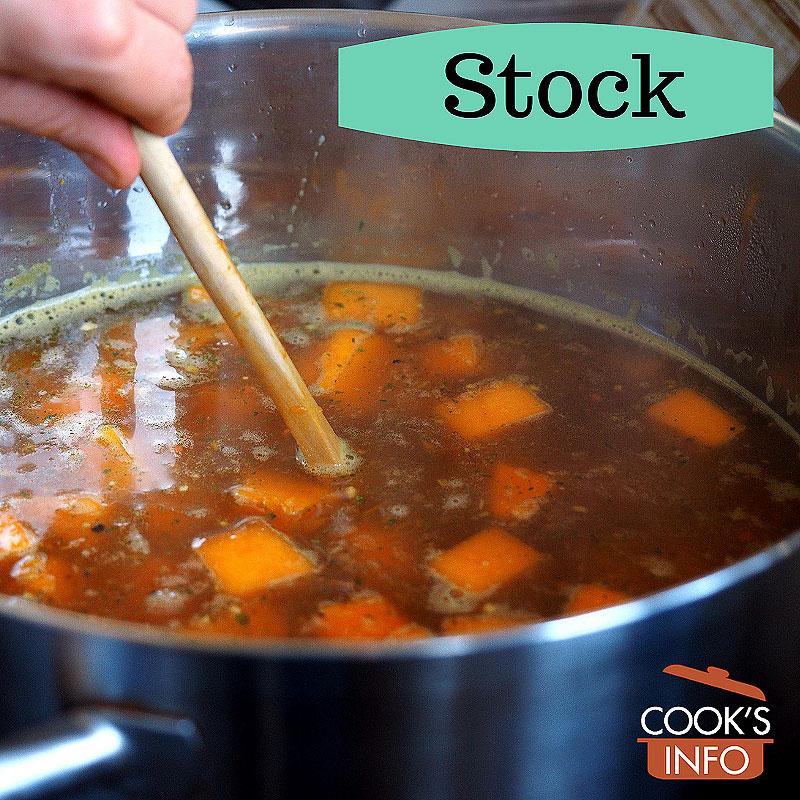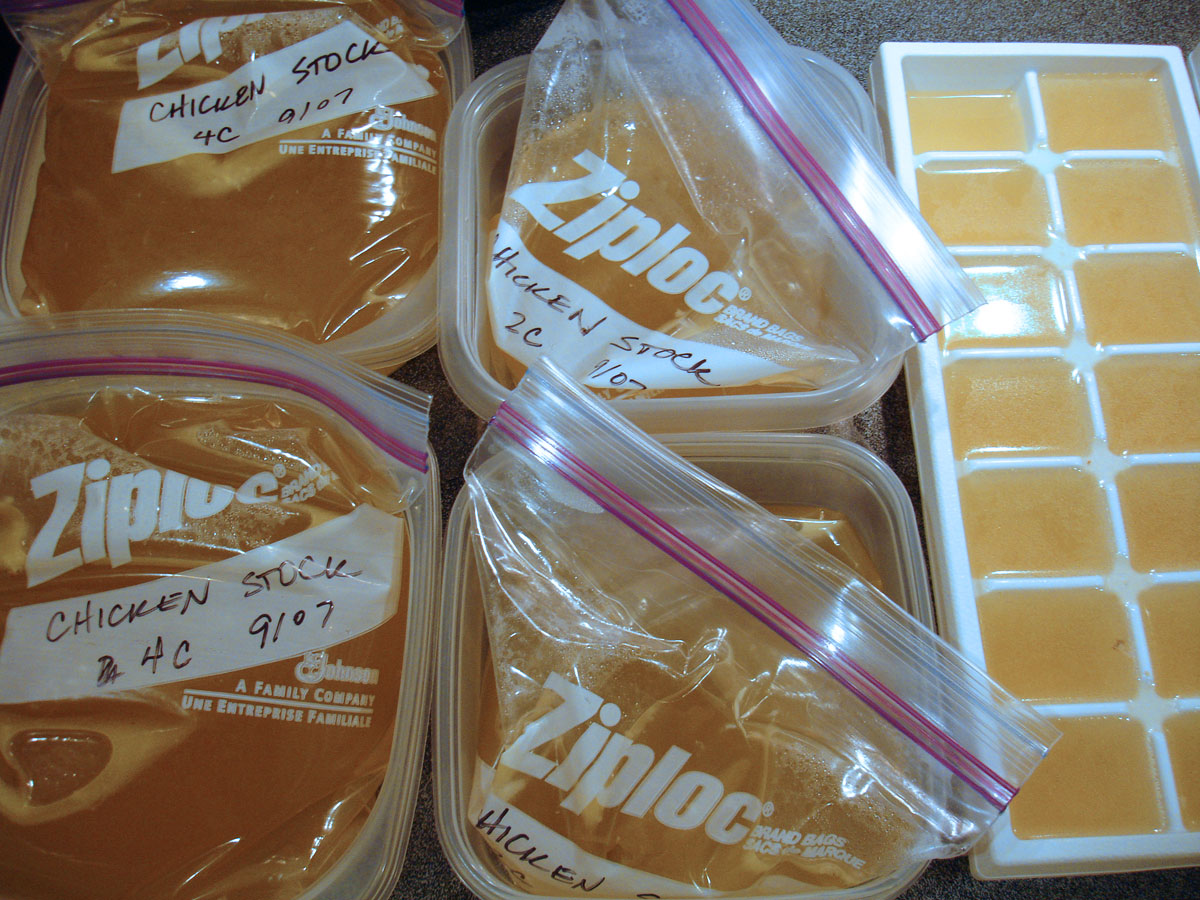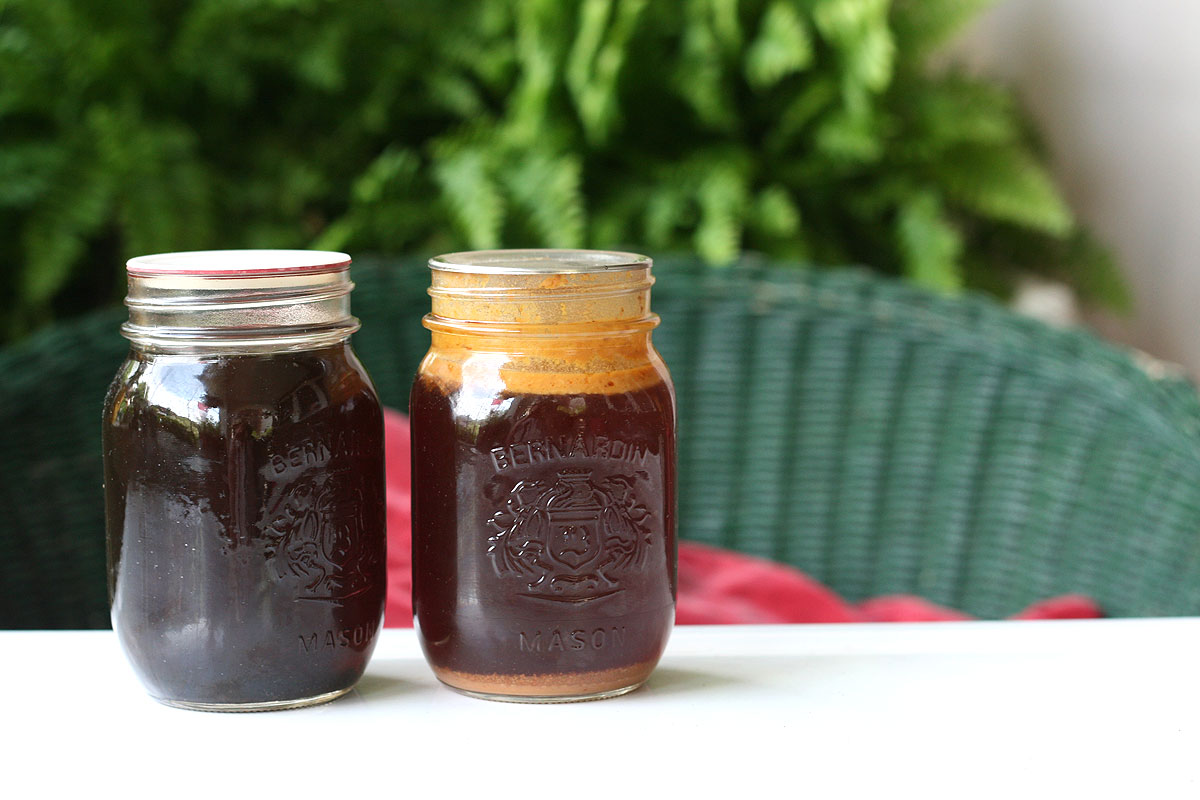
Hans Braxmeier / Pixabay.com / 2014 / CC0 1.0
In cooking, stock (aka broth, aka soup stock) is the water that vegetables, meat, fish or seafood have been simmered or steeped in. The items are then removed and usually discarded. The savoury water remaining retains some of the flavour and nutrients from the items making it more than just water — it’s now “stock.” Stock is used as the base liquid from which other food items such as sauces, soups, and stews are made. It adds far more nutrition, mouth feel and background flavour than just plain water would.
The Oxford Dictionary (2019) defines stock as “The liquor made by boiling meat (with or without vegetables, etc.) and used as a foundation for soup.”
Cooking Tips
The making of what some people consider good stocks can be quite complex, with entire culinary courses dedicated to it, but even a simple stock will add flavour dimensions. The Japanese make very simple stocks known as “dashi” simply by briefly soaking pieces of dried seaweed or fish in hot water for a few moments.
When you really need a totally clear broth, some suggest to add rinsed egg shells to the stock and simmer for 10 minutes. The shells will attract the sediment. Then strain.
When making any stock that you are planning to freeze for future use, it’s best to season and flavour it only lightly, if at all. The less specific flavour you add now, the more general purpose it will be — fancy up the flavour when you use it in a recipe. Too highly seasoned a stock could overpower what you make with it.
It is best to make a stock at least a day ahead, and refrigerate, so that you will be able to easily skim off fat that has risen to the surface before using the stock or preserving the stock in some fashion.
Substitutes
If you are using a tinned broth or a powdered stock cube, remember that they tend to be salty, so don’t salt what you are making until these are added and you’ve had a chance to taste to see what if any additional salt is needed.
Storage Hints
Do not store broth at room temperature. Refrigerate or freeze as soon as preparation is finished.
Stock can be frozen in jars, plastic containers or freezer bags. It’s important to allow ample headspace with containers and jars, or the lids of plastic containers may be forced off, and glass jars may break.
For half-litre/pint sized vessels:
- regular mouth , allow 2 ½ cm (¾ inch) headspace;
- wide mouth, allow 2 cm (½ inch) headspace.
For litre/quart sized vessels:
- regular mouth , allow 3 cm (1 inch) headspace;
- wide mouth, allow 4 cm (1 ½ inch) headspace. [1]Andress, Elizabeth L. and Judy A. Harrison. So Easy to Preserve. University of Georgia Cooperative Extension. Bulletin 989. Sixth Edition. 2014. Page 260
You may also wish to freeze some in ice cube trays, which when frozen you may then empty into plastic freezer bags. 1 ice cube equals 1 tablespoon.

Stock frozen in freezer bags and ice cube trays. Melissa Doroquez / flickr / 2007 / CC BY-SA 2.0
To can stock, a pressure canner must be used to render it safe from causing botulism. For more information, see Canning Homemade Stock on our preserving site. If you do not have access to a certified pressure canner, or wish to add thickeners, etc, to your stock, then freeze the stock. Never attempt to water bath can it.
“Stocks and soups made with vegetables and / or meat are low-acid products. They must be processed in a pressure canner to assure their safety. Use the processing time and pressure specified for each type.” [2] So Easy to Preserve. Page 104.

Home pressure-canned stocks. Cooksinfo / 2015. ©
Literature & Lore
“When about to prepare for the reception of company, it is advisable to begin, if there be sufficient time, two days beforehand in summer, or three days in winter, by getting ready the grand stock — an article so essential to all the after preparations, that it may be looked upon as the basis of operations. The meat required for this should be sent in the over night if possible… When the broth has boiled gently for seven hours, strain it through a broth napkin into large kitchen basins to cool, and place them in the larder for the next day’s use.” — The modern cook. Charles Elmé Francatelli. Philadelphia: T.B. Peterson and Brothers. ca. 1855. Preface, page 33.
Language
In many people’s usage, stock means the same thing as broth. Some books will list the two terms together. The two words are basically used interchangeably, though habit dictates certain expressions such as “beef broth” when someone might sip it from a cup, and that it be called “beef stock” when it is used as an ingredient in a recipe.
Other people will gamely try to keep clear water between the two terms. An editor at the Food Network responded when asked about the difference between the two, “Chicken stock tends to be made more from bony parts, whereas chicken broth is made more out of meat. Chicken stock tends to have a fuller mouth feel and richer flavor, due to the gelatin released by long-simmering bones.” [3]Chicken Stock vs. Chicken Broth. Q & A. Accessed August 2019 at https://www.foodnetwork.com/recipes/articles/chicken-stock-vs-chicken-broth
In the broader world of food, stock can of course also mean “inventory” of goods and merchandise on hand.
The Online Etymology Dictionary says the inventory sense usage is the older of the two dating from the early 1400s.
The Oxford Dictionary cites usages of stock “meaning ‘broth made by boiling meat or vegetables’ from the first half of the 1700s:
1730 C. Carter Compl. Pract. Cook 1 A good Stock of strong Broth Well made, and good Gravies well drawn off, are very principal Ingredients in the Composing of all Made-Dishes of boil’d Meats.
1747 H. Glasse Art of Cookery ix. 78 An Oyster Soop. Your Stock must be made of any Sort of Fish the Place affords.
1752 E. Moxon Eng. Housewifery (new ed.) 134 You must make your stock the day before you use it.
Related entries
References
| ↑1 | Andress, Elizabeth L. and Judy A. Harrison. So Easy to Preserve. University of Georgia Cooperative Extension. Bulletin 989. Sixth Edition. 2014. Page 260 |
|---|---|
| ↑2 | So Easy to Preserve. Page 104. |
| ↑3 | Chicken Stock vs. Chicken Broth. Q & A. Accessed August 2019 at https://www.foodnetwork.com/recipes/articles/chicken-stock-vs-chicken-broth |

